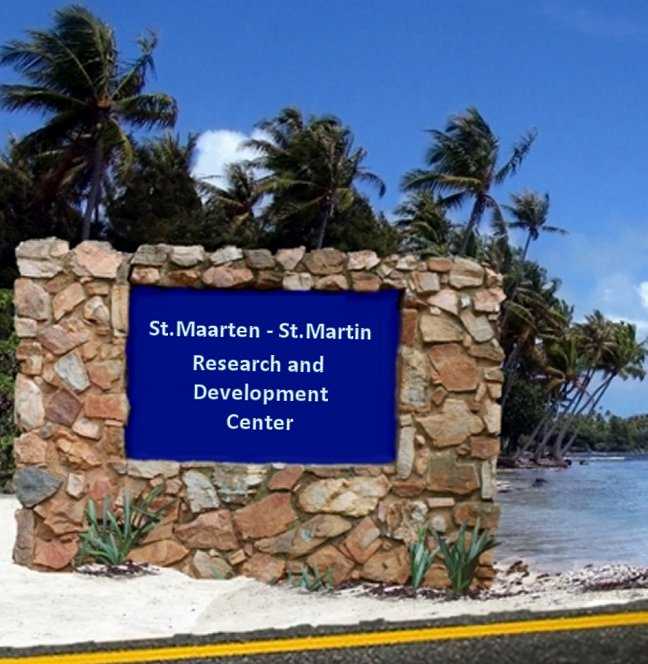It is common knowledge that the economies in the Caribbean desperately need diversification. Being dependent for about 70-85% on tourism is insane. It is sad that no realistic alternatives have been developed yet as the dilemma is older than V.S.O.P. ripened in an oak barrel. The problem needs attention because it is hotter than a firecracker lit on both ends. Sure, there is a lot of ‘um diddle diddle diddle um diddle ay’-talk about it, but there are no meaningful initiatives or results. More of the same, tourism development, is not a solution but rather fueling the problem. Maybe a look from different perspective in a time now, where the pandemic circumstances provide more time for pondering and planning.
The formation of a Research and Development Center can be a crucial element of the development of future advancement and sustainable growth. It is the place where scientists and engineers will meet, plan, investigate, and test inventions, innovations, and technologies that are developed at the center. It will also be a laboratory for studying any kind of impact of projects as a whole or its individual components on social-economic and environmental matters, as well as how extreme external conditions may impact the project.
The ultimate mission of the Center is to contribute to the production and dissemination of new rigorous evidence and products that provide practical solutions to issues, confrontations and problems that shall not be overlooked in this or any other project of its kind worldwide. Topics or projects may vary and pertain to unique regional circumstances that can also be applied in other areas.
The R&D Center will:
- provide leadership in defining research and development directions within its topic areas.
- attract scientists, engineers and students to visit the location (education/science tourism).
- be subject to worldwide media exposure of new development or discovery.
- function as an educational resource center (motivating local youth).
- create opportunities for cooperation with other educational institutions of various levels for the development of new dedicated programs and conducting supplemental research.
- extend the dissemination of its findings though online educational and informational offerings.
- impact the economy positively, without dependency on trends; it may diversify the sources of revenue of the local economy.
- offer local employment for non-academic supporting and supplementary services.
- inspire the future plans of young people in the community and region.
It is envisioned that the Research Center will become a permanent institution that will continuously explore all aspects of the development for regional needs but also applications that are useful worldwide. It will find its own place in the international community of Research and Development Centers. It is intended that it will remain permanently on its location. As such the R&D Center may be considered an equal gift and asset to both sides of the hosting island community.
Who is going pay for it?
The local governments will not have the funding for it…., period. However, the governments of the Netherlands and France, or even the European Union may be interested to contribute. There should be nothing against supporting a program that equally benefits the communities on both sides of the island. Seen as a vision, it could equally support socio-economic prosperity of both territories.
It should not be subject to local politics but be an independent international project. Because of the chosen international status, it might be that international organizations are willing to provide support.
It could even have the form of a private-public-partnership. Industries spend vast amounts of funding on research and development and have their own development centers and laboratories. However, it can be advantageous for them to outsource projects or have a representation in a particular geographic location or environment. They could help the research projects with knowledge input or feedback. They may receive privileges on sharing property rights or being the beneficiary of research and development results.
In business, there is no such a thing as a free lunch. But, if a project is of significant importance to development and testing of products or techniques, industries are willing to invest. On the one hand the support will be a form of donation by the industry for a good cause, on the other hand it is an opportunity for them to develop innovations that may result in new business opportunities. The R&D Center can be a testlab where new materials and techniques can be experienced under real typical regional circumstances and will be further developed on site. If it becomes a complex project, it could also mean that several industries will cooperate to find a joint solution and an opportunity how their products or services may complement each other in a united effort. Nothing is impossible and it could happen here in the Caribbean.
Does it all make sense?
To name a neutral territory, Switzerland is one of the highest spenders on research and development in the world. Switzerland invests over US$ 17.5 billion in research and development annually, which is equivalent to around 3% of its gross domestic product. The private sector is a major player when it comes to research and development. In previous years it invested a total of US$ 14 billion (2.2% of GDP) in R&D. Sure, Switzerland is known to be a wealthy country. Research and development contributes to it.
What’s next?
More than happy to think about it and consider it? Being ‘more than happy’ sounds like a dangerous mental condition after consuming illegal substances. And complacency borders on waiting and hoping for lightning to strike. For those looking for an easy way-out response: “If we don’t know it already, we’re not interested.”




















